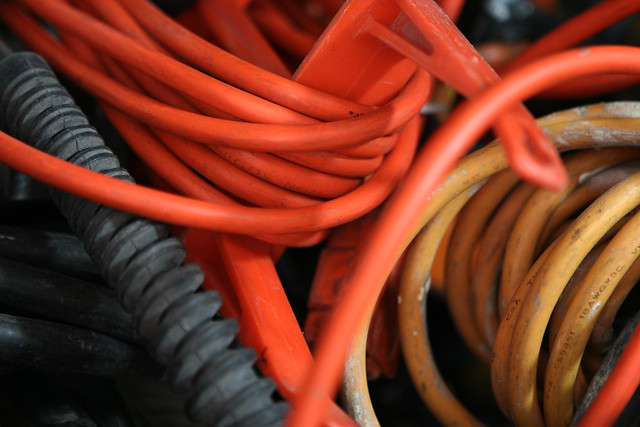All about Electric Cables
Electrical wires have different types and uses. (Photo Credits)
Getting informed about the different types and features of electrical wires will greatly help when it comes to maximizing the use of the cable, and being aware of safety protocols in using it.
The website Do-it-Yourself initially explained the difference between a wire and a cable. Electrician
“Wire itself is different than cable. Cable actually refers to two or more wires or conductors grouped together in a jacket. Wire is grouped by gauge number, running from 0000 to No. 40. The smaller the number, the thicker the wire. For home use, the most common gauges are between 10 and 20. While larger wire carries more current, forcing too much current through a wire will cause it to overheat and trip a breaker. Larger wire is also just generally unnecessary for home use. The most common conductor in home wiring is copper or tinned copper because it has minimum resistance at reasonable cost. Wire is also characterized by letters that correspond to the insulation type and electrical capacity.”
Read the whole article here.
Cables and Wires
The website Sciencing.com enumerated and explained the many types of electrical cables. One type that it expounded on is the rainbow cable. Electrical Association
“A ribbon electrical cable (also called multi-wire planar electrical cable or flat twin cables) is made up of multiple insulated wires running parallel to each other. These parallel wires allow the simultaneous transmission of multiple signals of data. According to ‘Optical Communications Essentials,’ a typical ribbon cable consists of four to 12 wires. It is commonly used to interconnect network devices. Ribbon cables also connect the motherboard with other core CPU (central processing unit) components in computers.”
Take a look at the continuation here.
Related Electrical Repair and Installation Services
- LightningElectric San Diego CA Free Estimate
- LightningElectric Vista Click Here
- LightningElectric Lemon Grove Contractor Website
- LightningElectric Rancho Bernardo 24/7 Electrician
- Lightning Electrician Lakeside
The website The Spruce meantime described the many colors and functions of electrical wires.
“The five basic color schemes used primarily in home construction are white, yellow, orange, black and gray. Actually, black is used twice, but it is used for two different wire gauges, so beware when selecting the appropriate wire size. These colors are the solid color of the insulation housing cover that coats the insulated and non insulated individual wires within.”
Know more about the subject in the post here.
Knowing more about electrical wires and cables can help in ensuring electrical safety around the
https://www.youtube.com/watch?v=_AApboO3aj0home.
The post Electrical Cable 101 appeared first on Lightning Electric.

No comments:
Post a Comment